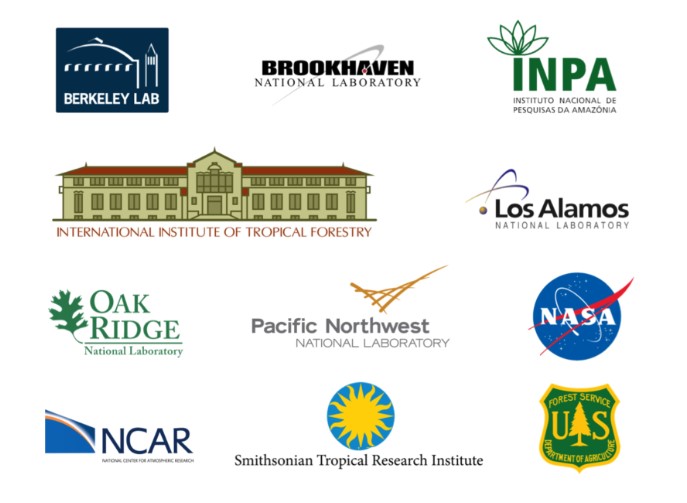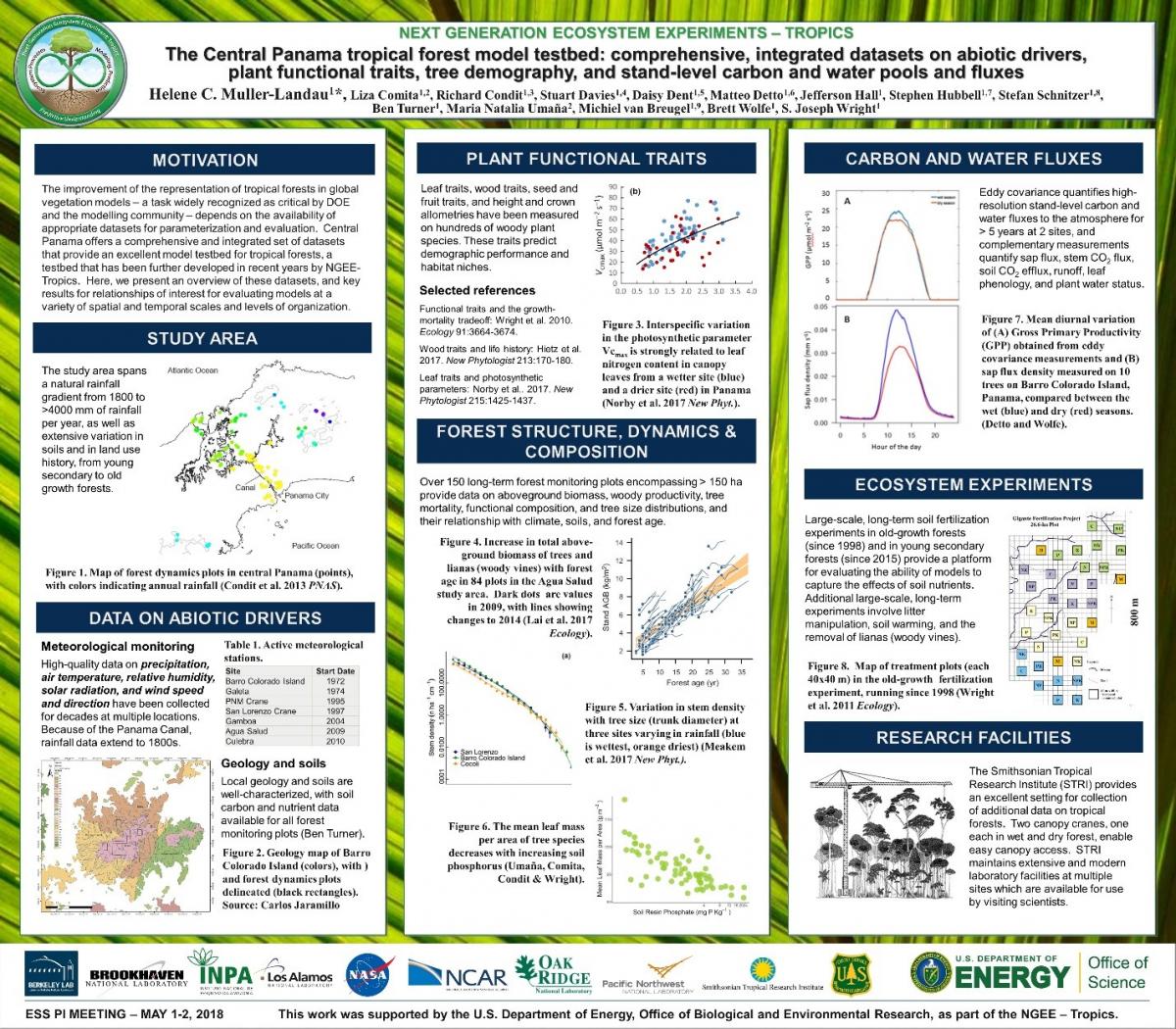ForestGEO Data Key to the Development and Testing of the NGEE-Tropics’ FATES Model
A new paper in Biogeosciences is the first to describe FATES (Functionally Assembled Terrestrial Ecosystem Simulator), a new Vegetation Demographic Model that when operated within Earth System Models, will improve predictions of the future structure and function of tropical forests, including whether tropical forests will serve as carbon sinks or sources over the next century. In this publication researchers tested the new FATES model against data from the ForestGEO 50-ha plot on Barro Colorado Island (BCI) in Panama. The BCI data set spans nearly 40 years and includes eight censuses of all trees with a dbh ≥ 1 cm providing an ideal testbed for the development of FATES.
A fully operational and tested version of FATES is the end goal of NGEE-Tropics (Next Generation Ecosystem Experiment - Tropics), a ten year, $100 million project that aims to create a representative, process-rich tropical forest ecosystem model. NGEE-Tropics is supported by the U.S. Department of Energy, with principal collaboration among five national labs, several federal agencies, and ForestGEO.

NGEE-Tropics collaborators have said that “[m]ost earlier Earth System Models treated tropical forests simply as layers of big leaves without resolving the size-structure, functional diversity, and competitive dynamics that exert large effects on ecosystem process responses to environmental change.” But tropical forests are not as simple as a uniform pile of leaves. They have incredibly high species diversity, and there’s virtually no species overlap between tropical forests of the Amazon, the Congo, and Southeast Asia. Complex feedback loops between forests and the atmosphere, which are being exacerbated by changing climatic conditions, further complicate modeling.
It’s critical that models be improved because tropical forests have a disproportionately large effect on Earth’s systems. Although tropical forests cover less than 7% of Earth’s surface, they contribute 34% of total terrestrial gross primary productivity, are responsible for 33% of land-atmosphere water exchange through evapotranspiration, and hold about 50% of intact forests’ carbon. Tropical forests are currently the largest source of uncertainty in Earth System Models, to the point that modelers are unsure whether tropical forests will have a net positive or negative carbon balance over the next century.

Members of the modeling and empirical communities have come together to work on a model that diminishes these uncertainties and more thoroughly represents the dynamics of tropical forests. Such a model will be able to inform conservation priorities and policies surrounding land use as Earth’s climate continues to change. Advances in computing power have also been an important factor in facilitating the NGEE-Tropics project. The FATES model aims to represent vegetation dynamics at leaf, tree, community, and regional scales.
Members of the ForestGEO network are especially involved with tree-level representation. Because our network has research sites across all tropical forests, we are well positioned to provide ground data for improving and testing the FATES model. Beyond standardized census data, the ForestGEO network also has complementary surveys (e.g., soils, plant functional traits) and infrastructure (e.g., canopy cranes in Panama) that facilitate more detailed representation of tropical forest complexity within Earth System Models.
ForestGEO is proud to contribute to this ambitious and important project, where prediction and protection of the future of tropical forests go hand in hand.
